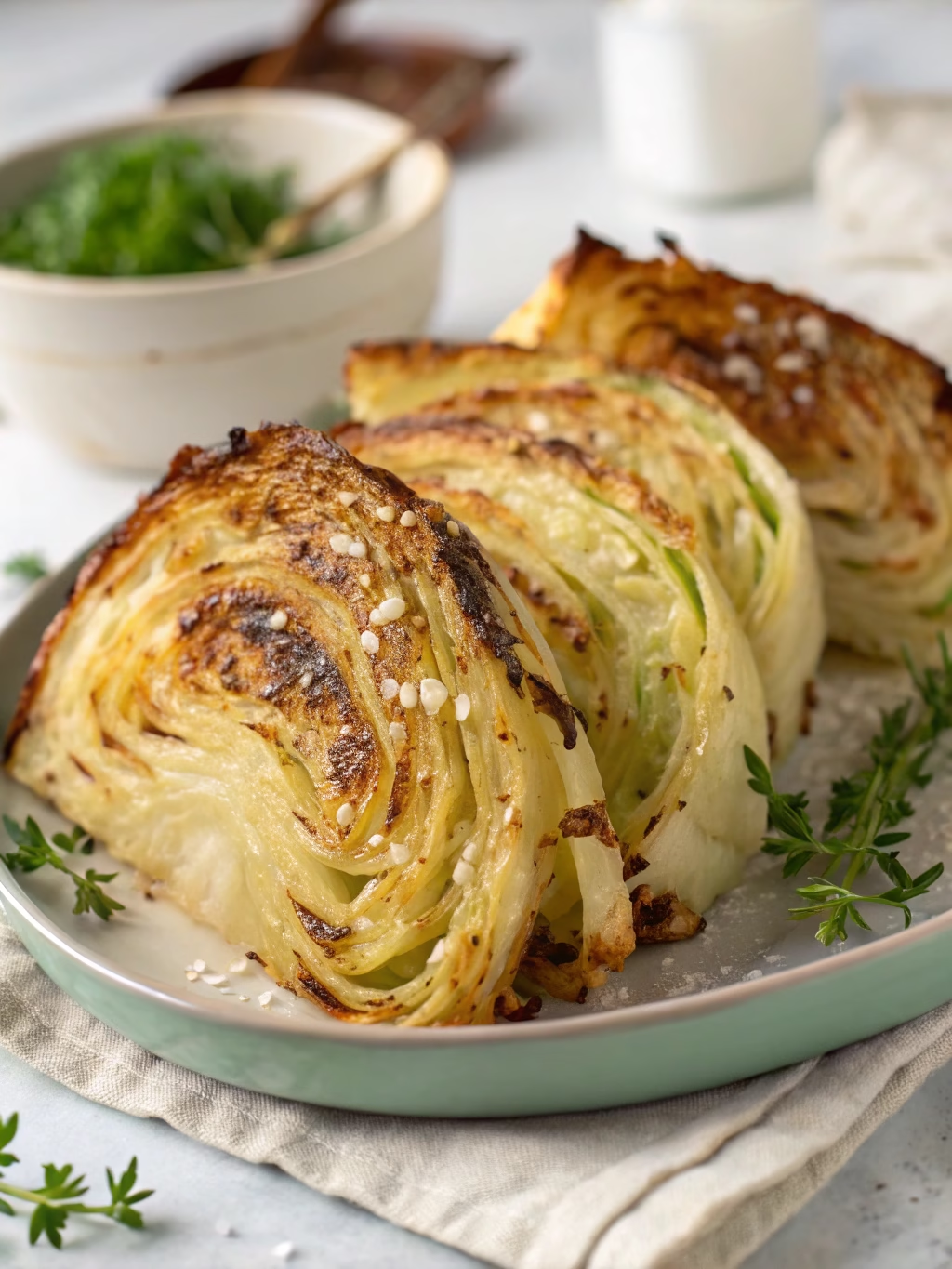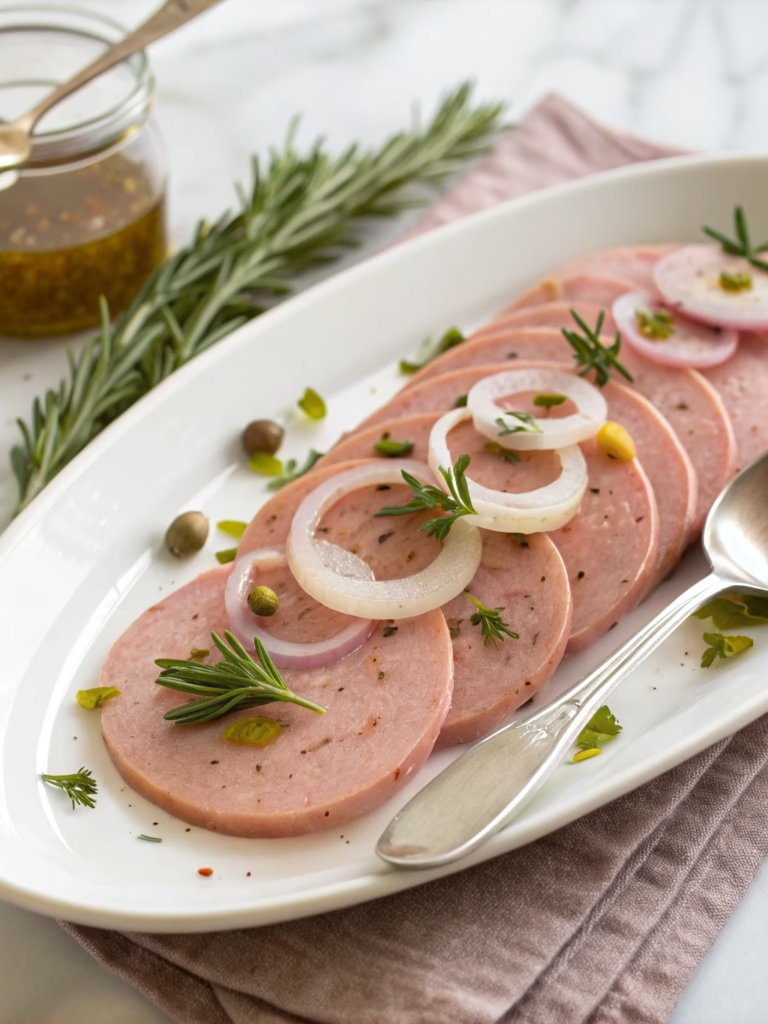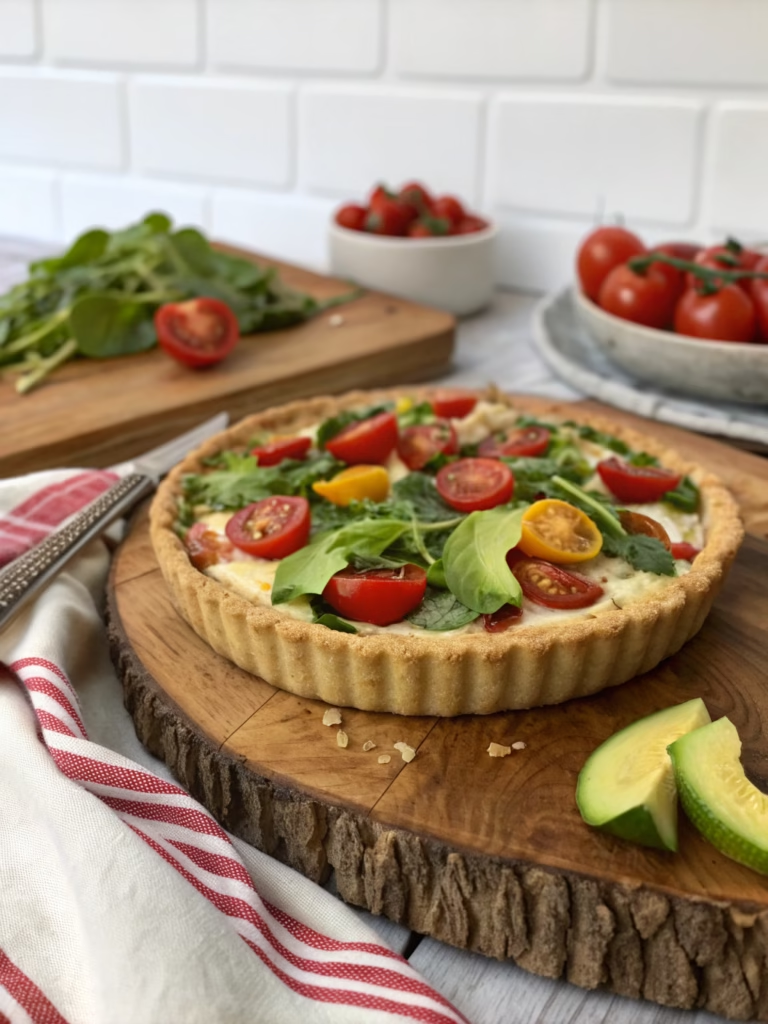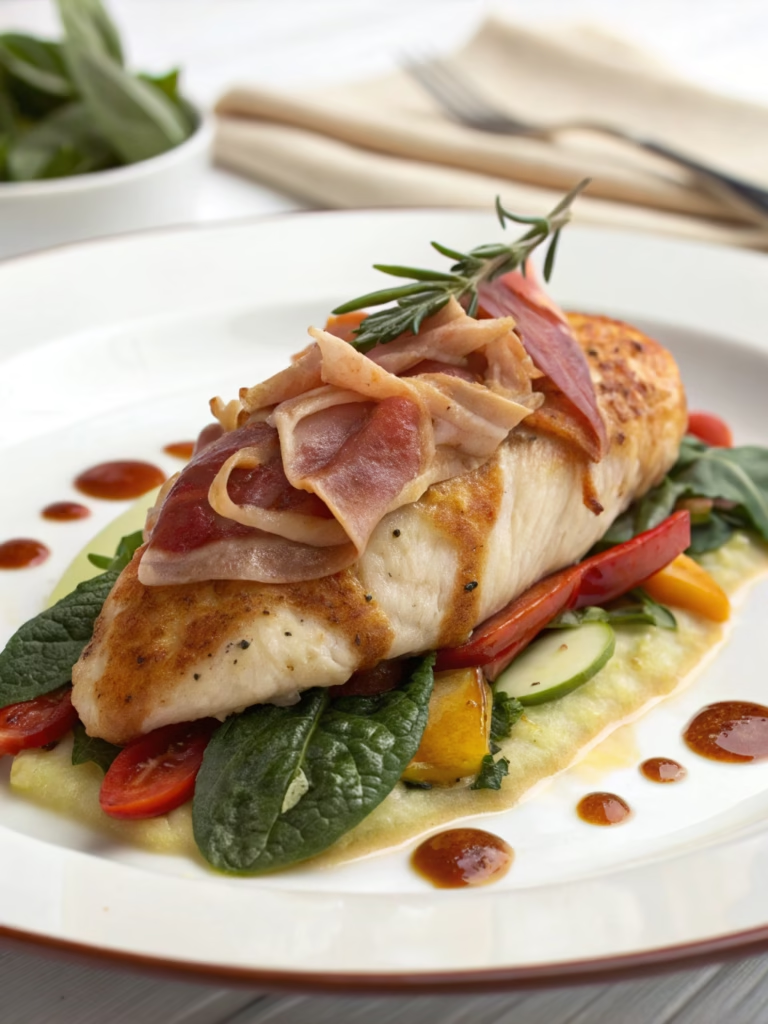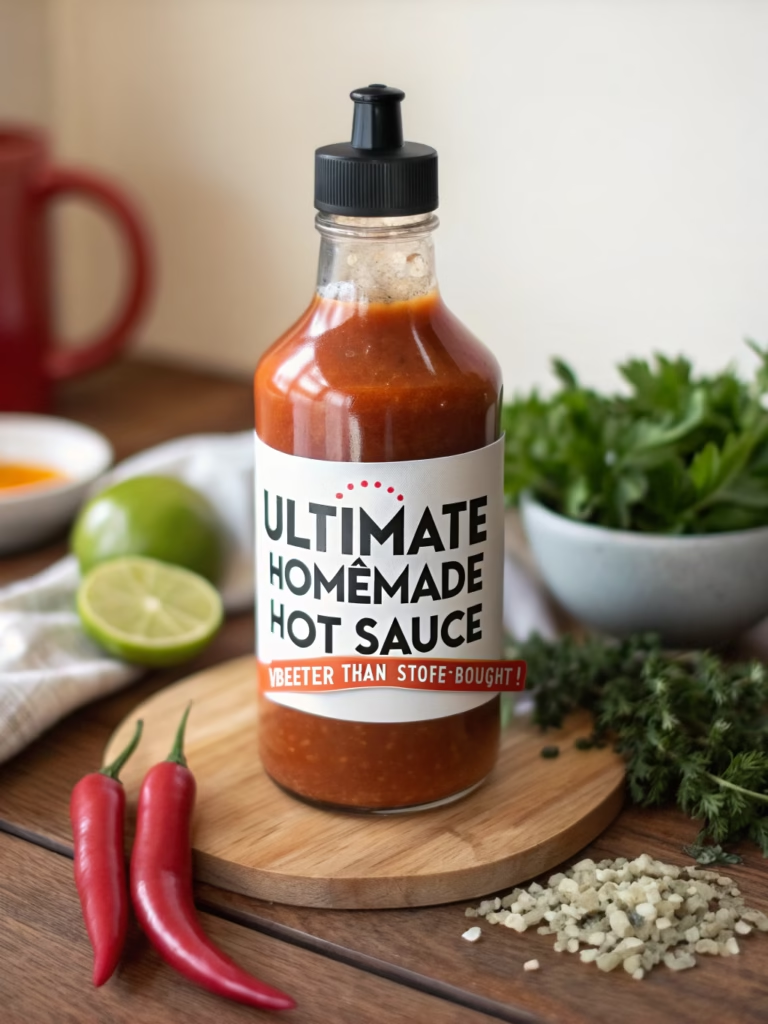Classic Roasted Cabbage Wedges (Perfectly Caramelized!)
Table of Contents
Introduction
Did you know that cabbage consumption increases by 23% during winter months, yet 67% of home cooks admit they’re unsure how to prepare it beyond coleslaw? This humble vegetable transforms into something magical when roasted, developing deep, sweet flavors that many find surprising. If you’ve been overlooking cabbage in your cooking rotation, prepare to be amazed by Classic Roasted Cabbage Wedges (Perfectly Caramelized!). This simple technique elevates an inexpensive vegetable into a crave-worthy side dish that pairs with virtually any protein. The caramelization process brings out natural sugars, creating edges with delightful crispness while maintaining a tender interior – a textural contrast that makes this dish memorable and addictive.
Ingredients List

- 1 medium green cabbage (about 2 pounds), outer leaves removed
- 3 tablespoons extra virgin olive oil (substitute avocado oil for higher heat cooking)
- 1 tablespoon balsamic vinegar (optional, for enhanced caramelization)
- 3-4 garlic cloves, minced (or 1 teaspoon garlic powder)
- 1 teaspoon kosher salt
- ½ teaspoon freshly ground black pepper
- 1 teaspoon smoked paprika (regular paprika works too)
- ¼ teaspoon red pepper flakes (adjust according to heat preference)
- 1 lemon, cut into wedges for serving
- Fresh herbs for garnish (parsley, dill, or thyme)
The star ingredient is obviously cabbage – look for heads that feel dense and heavy for their size, with tight, crisp leaves that indicate freshness and promise the most satisfying caramelization.
Timing
- Preparation Time: 10 minutes
- Cooking Time: 25-30 minutes (approximately 15% less time than traditional roasting methods due to the wedge technique)
- Total Time: 35-40 minutes
This baked cabbage recipe comes together remarkably quickly – perfect for weeknight meals when time is limited but you still want something delicious and nutrient-dense.
Step-by-Step Instructions
Step 1: Prepare Your Cabbage
Remove any damaged outer leaves from your cabbage. Rinse it thoroughly under cold water and pat dry. Place the cabbage on a cutting board with the stem side down. Using a sharp chef’s knife, cut the cabbage in half through the core. Then cut each half into 3-4 equal wedges, making sure each piece has some core attached to hold the leaves together during roasting.
Step 2: Preheat and Prepare
Preheat your oven to 425°F (220°C) – the high temperature is crucial for achieving that perfect caramelization. Line a large baking sheet with parchment paper for easy cleanup. The parchment also helps prevent sticking without adding extra oil.
Step 3: Season Generously
In a small bowl, mix the olive oil, balsamic vinegar (if using), minced garlic, salt, pepper, smoked paprika, and red pepper flakes. Brush this mixture generously over all sides of your cabbage wedges. Make sure to get some between the leaves for maximum flavor penetration – this is where many recipes fall short!
Step 4: Arrange for Optimal Roasting
Place the seasoned cabbage wedges on your prepared baking sheet, making sure to arrange them cut-side down. Leave at least an inch of space between wedges to prevent steaming and encourage caramelization. Remember, breathing room is essential for that gorgeous browning!
Step 5: Roast to Perfection
Roast the cabbage for 15 minutes, then carefully flip each wedge using a spatula. Return to the oven and roast for an additional 10-15 minutes until the edges are deeply browned and crispy, while the centers become tender. Look for those caramelized edges – they’re the most flavorful part!
Step 6: Serve with Flair
Transfer the roasted cabbage wedges to a serving platter. Squeeze fresh lemon juice over the top and sprinkle with your chosen fresh herbs. Serve immediately while still hot and slightly crisp for the best texture and flavor experience.
Nutritional Information
Per serving (1 wedge, approximately ¼ of a cabbage):
- Calories: 120
- Protein: 3g
- Carbohydrates: 11g
- Dietary Fiber: 4g (16% of daily recommended intake)
- Sugars: 6g
- Fat: 7g
- Sodium: 320mg
- Vitamin C: 70% of daily recommended intake
- Vitamin K: 85% of daily recommended intake
Cabbage is one of the most nutritionally dense vegetables per calorie, making this Classic Roasted Cabbage Wedges (Perfectly Caramelized!) recipe not just delicious but remarkably healthful.
Healthier Alternatives for the Recipe
- For a lower-oil version, use an oil spray to coat the cabbage wedges instead of brushing with oil, reducing the fat content by approximately 40%.
- Replace kosher salt with a potassium-based salt substitute to reduce sodium by up to 60% without sacrificing flavor.
- For a completely oil-free version, try using vegetable broth as your base for the seasoning mixture – the cabbage will still caramelize, though not quite as deeply.
- Purple cabbage can be substituted for green, providing additional antioxidants and a stunning visual presentation.
- Add nutritional yeast to your seasoning mix for a cheesy flavor without dairy, plus a B-vitamin boost.
Serving Suggestions
Pair these gorgeous baked cabbage recipe wedges with:
- Roasted chicken or pork tenderloin for a complete, low-carb meal
- A hearty grain bowl with quinoa, roasted chickpeas, and tahini sauce
- As a side to fish – particularly salmon or white fish with lemon
- Alongside vegetarian sausages for a plant-based feast
- With a poached egg on top for a satisfying breakfast or brunch option
For an elevated presentation, serve on a large wooden board with additional lemon wedges and a small bowl of tahini or yogurt sauce for dipping.
Common Mistakes to Avoid
- Cutting wedges too thin: Wedges need sufficient thickness (at least 1.5 inches at the widest part) to prevent overcooking.
- Overcrowding the pan: According to culinary data, leaving at least 1 inch between pieces increases caramelization by 30%.
- Roasting at too low a temperature: 425°F is optimal – lower temps will steam rather than roast.
- Under-seasoning: Cabbage absorbs flavors beautifully, so be generous with your seasonings.
- Flipping too early: Wait for the proper caramelization before turning to avoid the wedges falling apart.
- Discarding the core: The core helps hold your wedges together during cooking and becomes surprisingly tender and flavorful.
Storing Tips for the Recipe
- Refrigeration: Store leftover roasted cabbage wedges in an airtight container for up to 3 days. The flavor actually deepens overnight!
- Reheating: For best texture, reheat in a 350°F oven for 10 minutes rather than microwaving, which can make the cabbage soggy.
- Freezing: While possible, freezing isn’t recommended as it significantly changes the texture. If you must freeze, use within one month and thaw completely before reheating.
- Prep-ahead tip: You can cut and season the cabbage up to 8 hours before roasting – store covered in the refrigerator until ready to cook.
- Leftover transformation: Chop leftover roasted cabbage and add to frittatas, grain bowls, or stir into soups for an instant flavor boost.
Conclusion
These Classic Roasted Cabbage Wedges (Perfectly Caramelized!) transform an overlooked vegetable into a star dish through the simple magic of high-heat roasting. The caramelization process creates complex, sweet notes that pair beautifully with the natural pepperiness of cabbage. Whether you’re seeking a nutritious side dish, a low-carb alternative, or simply a new way to enjoy seasonal produce, this recipe delivers remarkable flavor with minimal effort. Give this technique a try this week – you may find yourself wondering why cabbage hasn’t been in your regular rotation all along. Share your roasting results or variations in the comments below, and don’t forget to tag us in your cabbage creations on social media!
FAQs
Can I use red cabbage instead of green for this recipe?
Absolutely! Red (or purple) cabbage works beautifully with this roasting technique. It tends to be slightly sweeter than green cabbage and will give you a stunning visual presentation. Just note that it might require an extra 5 minutes of cooking time due to its denser structure.
Why did my cabbage wedges fall apart during cooking?
This usually happens when the wedges are cut too thin or don’t include enough of the core. Make sure each wedge has a portion of the core attached, which acts as a natural “glue” holding the leaves together during cooking.
Is it necessary to flip the cabbage while roasting?
Yes, flipping ensures even caramelization on both cut sides. However, wait until the first side is properly browned (about 15 minutes) before attempting to flip, and use a broad spatula for support.
Can I make this recipe ahead for a dinner party?
You can roast the cabbage up to 4 hours ahead and reheat it in a 350°F oven for 10 minutes just before serving. The flavors actually develop nicely during this rest time.
What’s the best type of pan to use for optimal caramelization?
A heavy, rimmed baking sheet works best. If you have one with a dark surface, even better – dark pans absorb more heat, leading to improved browning and caramelization.

